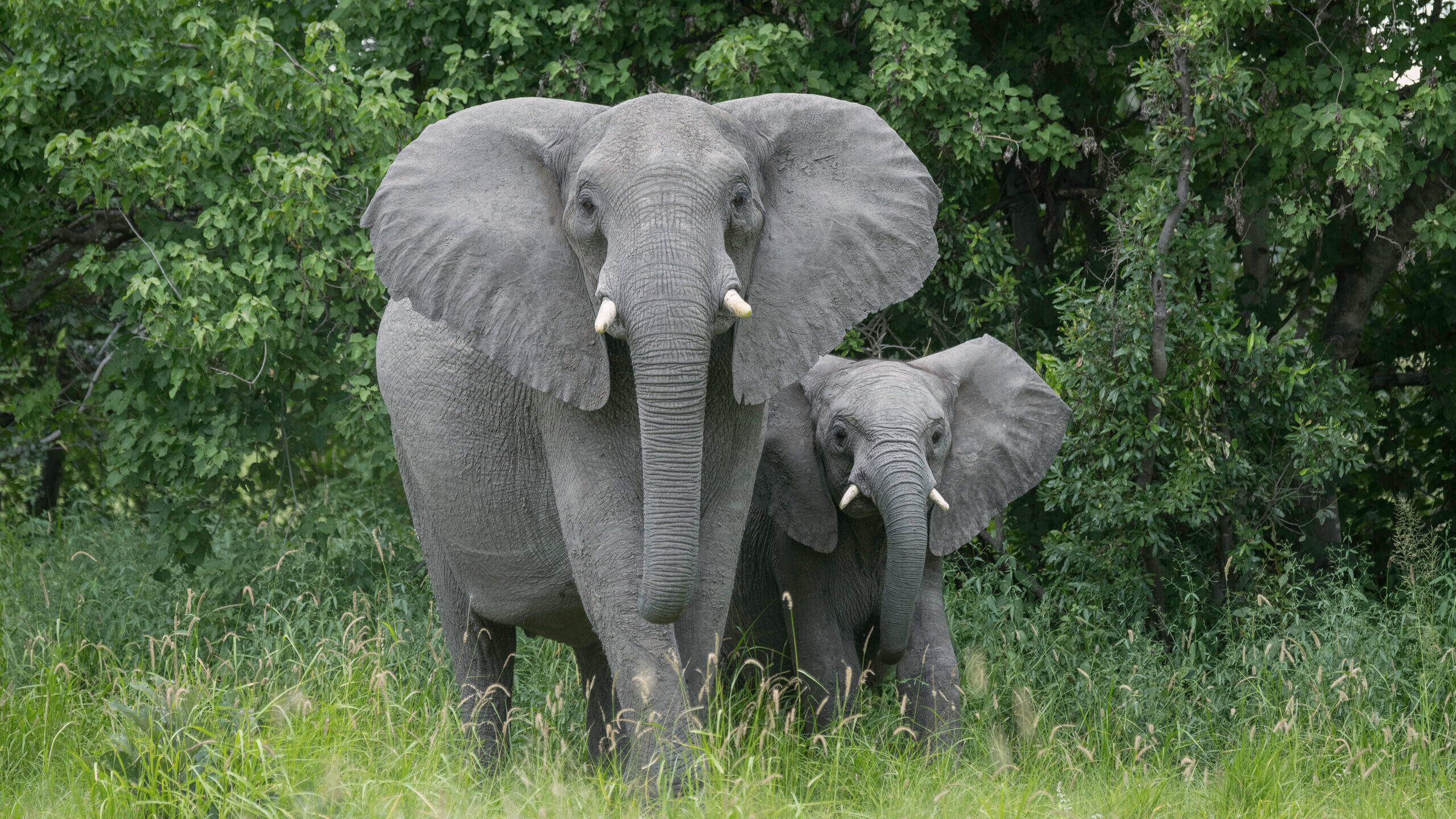Understanding the Relationship Between Metabolism and Health in Endangered Elephants
Researchers including Ph.D. student Jordan Wood, Michael Stoskopf, Larry Minter and Maria Serrano from the NC State College of Veterinary Medicine used nuclear magnetic spectroscopy to evaluate the metabolomics of whole blood drawn from six African savanna elephants (Loxodonta africana) at the North Carolina Zoo. Relatively little has been done to evaluate elephant metabolism using the emerging field of metabolomics so these measurements are an important step in understanding the relationship between metabolomics and health in these endangered animals. The results were consistent among animals and did not vary dramatically with age or the sex of the animal. The work was done with support from the Environmental Medicine Consortium.
The study was published in the journal Metabolites.
Read it here: https://www.mdpi.com/2218-1989/12/5/400/htm
Quantifying Cognitive Impairment in Aging Pet Dogs
This study aimed to determine whether cognitive function could be quantified in aging pet dogs and to correlate cognitive testing with screening questionnaires from pet owners and a new method of measuring biomarkers for neurodegenerative diseases. The research findings suggest that a multi-dimensional approach using questionnaires, cognitive tests and blood tests can be used to quantify cognitive decline in aging pet dogs. Members of the research team from the CVM were Gilad Fefer, Wojciech K. Panek, Michael Z. Khan, Matthew Singer, Hans Westermeyer, Freya M. Mowat, Beth Case, Natasha J. Olby and Margaret E Gruen.
The study was published in IOS Press.
Read it here: https://content.iospress.com/articles/journal-of-alzheimers-disease/jad215562
Obtaining More Accurate Results in Images of Deep Tendon Tears in Horses
While MRI is the method of choice for diagnosing longitudinal tears of the deep digital flexor tendon of horses, differentiating between various grades of tears based on imaging characteristics is challenging due to overlapping imaging features. In this study, a machine-learning scheme was applied to improve results in identifying different grades of tearing in horses. Researchers from the CVM were Erin K Keenihan, Lauren V. Schnabel and William R. Redding.
The study was published in the journal Veterinary Radiology and Ultrasound.
Read it here: https://onlinelibrary.wiley.com/doi/full/10.1111/vru.13090
Finding a Need to Educate Pet Owners About Food Bowl Hygiene
The mishandling of pet food and neglect of food dish hygiene practices can have adverse health impacts for both humans and pets. This study investigated dog owners’ feeding habits and evaluated the impact of the Food and Drug Association hygiene protocols on dog food dish contamination. Pet feeding and food dish hygiene data were collected from 417 dog owner surveys and 68 food dish swabs. The study, which included CVM researchers Emily Luisana, Korinn Saker and Caitlyn Getty, suggests a need to educate pet owners on pet food handling and dish hygiene to minimize bacterial contamination of dishes, especially for high-risk animals.
This study was published in the journal PLOS ONE.
Read it here: https://journals.plos.org/plosone/article?id=10.1371/journal.pone.0259478
Evaluating Less-Risky Surgery to Treat Jaw Condition in Cats
Temporomandibular joint ankylosis is reported in several species and is characterized by the abnormal mobility of one or both temporomandibular joints, leading to partial or near-total inability to open the mouth. In this study, three cats affected by unilateral temporomandibular joint ankylosis underwent segmental mandibulectomy, while one cat with bilateral ankylosis underwent right temporomandibular joint gap arthroplasty and left segmental mandibulectomy. The surgery typically used to correct this condition can be difficult. This study suggests that an alternative type of surgery that is less difficult to perform successfully can result in relieving the condition. NC State clinician Lenin A. Villamizar-Martinez was part of an international team of researchers involved in this study.
This study was published in the Journal of Feline Medicine and Surgery Open Reports.
Read it here: https://www.ncbi.nlm.nih.gov/pmc/articles/PMC8978324/
Discovering Lymphoma of the Skin in a Catfish
A wild-caught white catfish developed multiple cutaneous masses. A tissue examination confirmed a diagnosis of cutaneous epitheliotropic lymphosarcoma, a condition most commonly reported in mammals. This is the first reported case of cutaneous epitheliotropic lymphosarcoma in an ictalurid (a type of catfish found in North America) and one of the few published cases of this condition in any fish species. NC State researchers Ashlyn C. Heniff, Laura R. Chen, Emily F. Christiansen, Craig A. Harms, Jerry M. Law and Keith E. Linder participated in this study.
This study was published in the Journal of Fish Diseases.
Read it here: https://onlinelibrary.wiley.com/doi/10.1111/jfd.13625
- Categories:



